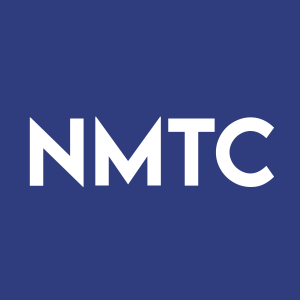NeuroOne® Successfully Completes Initial Animal Implant of Novel Thin Film Paddle Lead for Spinal Cord Stimulation
Rhea-AI Summary
NeuroOne Medical Technologies Corporation (NASDAQ: NMTC) has achieved a significant milestone by successfully completing an initial animal implant of its innovative thin film paddle leads for spinal cord stimulation. This advancement aims to treat chronic back pain associated with multiple failed back surgeries and intractable pain in the lower back and legs. The animal study confirmed the feasibility of the devices, ensuring they could be easily placed within the epidural space. Additionally, the company is developing a percutaneous delivery system to streamline the implantation process. CEO Dave Rosa highlighted the large market potential, emphasizing improved patient outcomes and device efficiency.
Positive
- Successful initial animal implant of novel thin film paddle leads.
- Feasibility confirmed for device placement in the epidural space.
- Development of a percutaneous delivery system to eliminate incision.
Negative
- None.
News Market Reaction 1 Alert
On the day this news was published, NMTC declined 5.26%, reflecting a notable negative market reaction.
Data tracked by StockTitan Argus on the day of publication.
Company is also developing a percutaneous (through a needle) delivery system for paddle leads
The study evaluated the feasibility of implanting a variety of sizes and shapes of ultra-thin paddle leads in a sheep model. A mini laminectomy surgical approach was used to gain access to the epidural space for device placement. All devices were easily advanced to the target location in under one minute. A competitive silicone-based lead was also placed for comparison purposes. The NeuroOne lead fit comfortably in the epidural space and the veterinary surgeon reported no concerns regarding the placement of the lead.
These results demonstrated feasibility for placement of a thin film paddle lead intended to treat chronic back pain due to multiple failed back surgeries. More testing will be completed to optimize the design and placement. The Company is also developing a percutaneous (through a needle) paddle lead placement system which would eliminate the need for an incision in the patient's back. The preliminary bench top testing for this percutaneous approach has also been successfully completed.
About NeuroOne
Forward Looking Statements
This press release may include forward-looking statements within the meaning of Section 27A of the Securities Act of 1933, as amended, and Section 21E of the Securities Exchange Act of 1934, as amended. Except for statements of historical fact, any information contained in this presentation may be a forward–looking statement that reflects NeuroOne's current views about future events and are subject to known and unknown risks, uncertainties and other factors that may cause our actual results, levels of activity, performance or achievements to be materially different from the information expressed or implied by these forward-looking statements. In some cases, you can identify forward–looking statements by the words or phrases "may," "might," "will," "could," "would," "should," "expect," "intend," "plan," "objective," "anticipate," "believe," "estimate," "predict," "project," "potential," "target," "seek," "contemplate," "continue, "focused on," "committed to" and "ongoing," or the negative of these terms, or other comparable terminology intended to identify statements about the future. Forward–looking statements may include statements regarding the development of the Company's electrode technology program, applications for, or receipt of, regulatory clearance, the timing and extent of product launch and commercialization of our technology, clinical and pre-clinical testing, what the future may hold for electrical stimulation and NeuroOne's potential role, business strategy, market size, potential growth opportunities, future operations, future efficiencies, and other financial and operating information. Although NeuroOne believes that we have a reasonable basis for each forward-looking statement, we caution you that these statements are based on a combination of facts and factors currently known by us and our expectations of the future, about which we cannot be certain. Our actual future results may be materially different from what we expect due to factors largely outside our control, including risks that the partnership with Zimmer Biomet may not facilitate the commercialization or market acceptance of our technology; whether due to supply chain disruptions, labor shortages, the impact of COVID-19 or otherwise; risks that our technology will not perform as expected based on results of our pre-clinical and clinical trials; risks related to uncertainties associated with the Company's capital requirements to achieve its business objectives and ability to raise additional funds: the risk that we may not be able to secure or retain coverage or adequate reimbursement for our technology; uncertainties inherent in the development process of our technology; risks related to changes in regulatory requirements or decisions of regulatory authorities; that we may not have accurately estimated the size and growth potential of the markets for our technology; risks relate to clinical trial patient enrollment and the results of clinical trials; that we may be unable to protect our intellectual property rights; and other risks, uncertainties and assumptions, including those described under the heading "Risk Factors" in our filings with the
Caution: Federal law restricts this device to sale by or on the order of a physician.
![]() View original content to download multimedia:https://www.prnewswire.com/news-releases/neuroone-successfully-completes-initial-animal-implant-of-novel-thin-film-paddle-lead-for-spinal-cord-stimulation-301773816.html
View original content to download multimedia:https://www.prnewswire.com/news-releases/neuroone-successfully-completes-initial-animal-implant-of-novel-thin-film-paddle-lead-for-spinal-cord-stimulation-301773816.html
SOURCE








